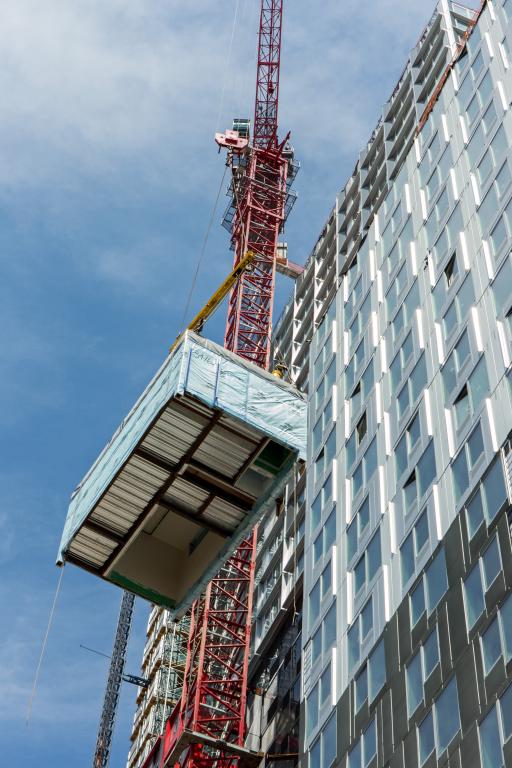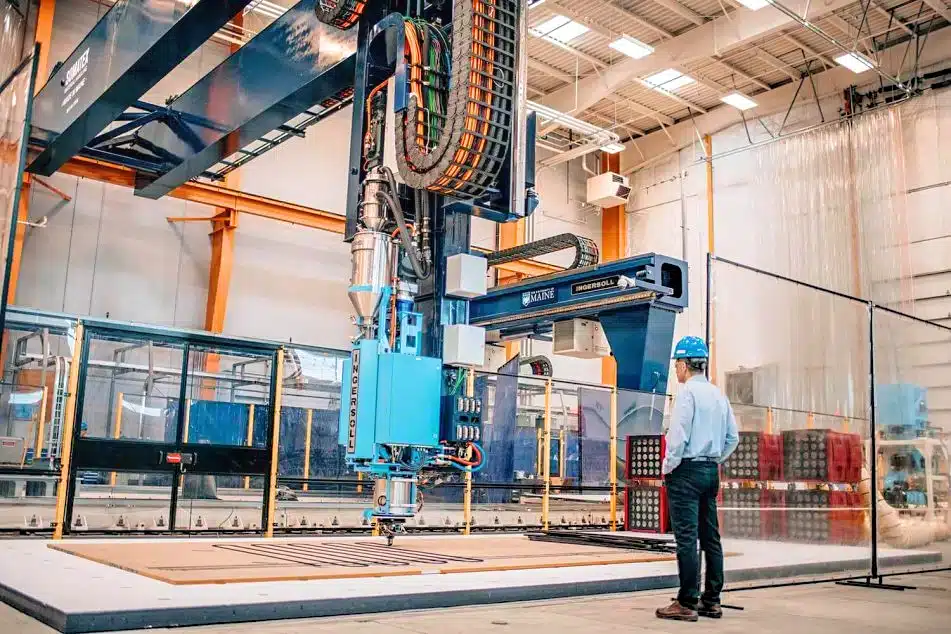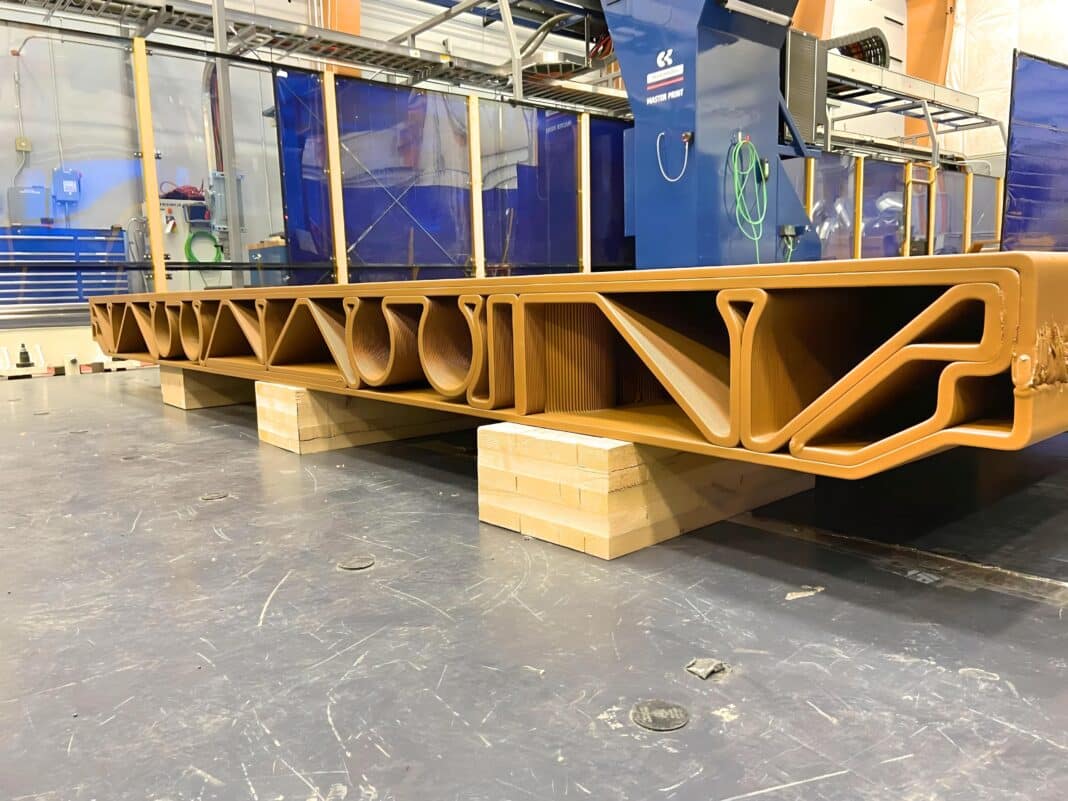One of the world’s top architecture firms—behind Atlassian, the world’s largest timber building—is working with material scientists to develop a new floor system made entirely from bioplastic and wood flour.
Wood Central can reveal that SHoP Architects—also working on YouTube’s 5-stage Silicon Valley headquarters—is collaborating with the US Department of Energy’s Oak Ridge National Laboratory (ORNL) and the University of Maine to 3D print prefabricated panels that are faster to manufacture and much more sustainable than conventional steel and concrete-based structural steel systems.
Part of the Sustainable Materials and Manufacturing Alliance for Renewable Technologies (SM2ART), a federally funded initiative that specialises in manufacturing new building materials from bio-based materials (like timber), the SM2ART Nfloor cassette could replace traditional steel-and-concrete flooring in mid-rise and high-rise buildings.
The researchers began work on the cassette following a prompt from SHoP Architects, which led them to explore the potential of bio-based materials and additive manufacturing for floor panels.
“We saw the precedent in the aerospace industry, where they introduce new technologies within small parts and expand outward to the whole,” according to SHoP principal John Cerone.
“We applied that principle by isolating a building system product — a light-gauge steel floor cassette assembly — from an existing supply-chain partner to benchmark its replacement with a single solid-state, printed, bio-based part.”
Wood Central understands that the panels are pressed together using polylactic acid (PLA), a bioplastic derived from corn residue mixed with wood flour made from lumber processing waste.

According to Katie Copenhaver, an ORNL researcher involved in the project, the floor panel’s strength comes from combining these two materials and its geometric shape, which distributes load to its outer edges, where it would rest within a building’s steel framework.
“Adding wood flour to the PLA increases its stiffness, which is key to overall performance,” Ms Copenhaver said. “What we can’t achieve with material properties alone, we can account for with structural design.”
According to testing, the cassette has the same strength as a typical steel-concrete floor fabrication – is fully biodegradable and easier to walk on.
Its single-piece mono-material construction is also important: “Unlike a conventional steel floor cassette,” Ms Copenhaver said, made from 31 parts and three materials, “it is quicker to make and easier to recycle.”
3D printing is attractive “in terms of performance.”
The channels for wiring, plumbing, and ductwork can be printed during the manufacturing process, eliminating the need to cut them out after assembly is completed and thus saving time and money.
The cassette takes about 30 hours to print – and can reduce labour costs by as much as 33%.
“When people think of 3D printing, they usually think of form, or in terms of an aesthetic or formal gesture,” Mr Cerone said. “Here, we are thinking of it in terms of performance.”
“Beyond the carbon reduction inherent in bio-based materials, leveraging additive manufacturing allowed efficient placement of structural material while integrating routes for mechanical, electrical and plumbing systems.”
While the cassette is still in the early stages of development, the researchers and SHoP Architects believe it holds significant promise for advancing the use of organic materials in construction, particularly for modular multi-residential buildings.
“What’s exciting about this advancement is that it is industrialising a process itself, which will be applicable across all typologies and scales in the future, creating more efficient and performance-driven possibilities in everyday construction,” said Christopher Sharples, SHoP’s founding principal. The researchers are now working to refine the design, reduce print time and material usage, and explore additional functionality.
World’s Biggest 3D printer builds anything from wood dust!
In May, Wood Central reported that the US Government is investing millions into developing supersized 3D printers to build the next generation of infrastructure—for national security and use in affordable housing, bridge construction, ocean and wind technology, and maritime vessel fabrication.
These printers, located at the University of Maine, now use “wood dust”—sourced from the US’s most abundant forests—to manufacture greener and more cost-effective building materials.

The latest of these is Factory of the Future 1.0 (or FoF 1.0), which is four times larger than MasterPrint—also at the University of Maine—and can print objects 96 feet long by 32 feet wide by 18 feet high, up to 500 pounds of products per hour.
- To learn more about the SM2ART Nfloor cassette and a recent prototype installed on the world’s tallest modular building in Brooklyn, New York, earlier this year, click here.






